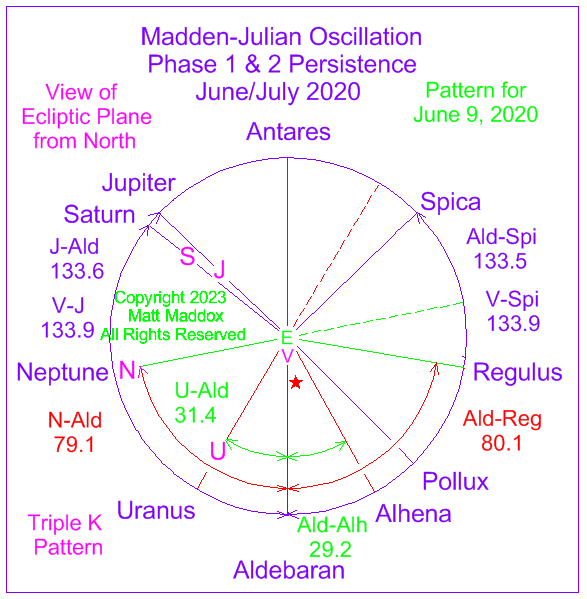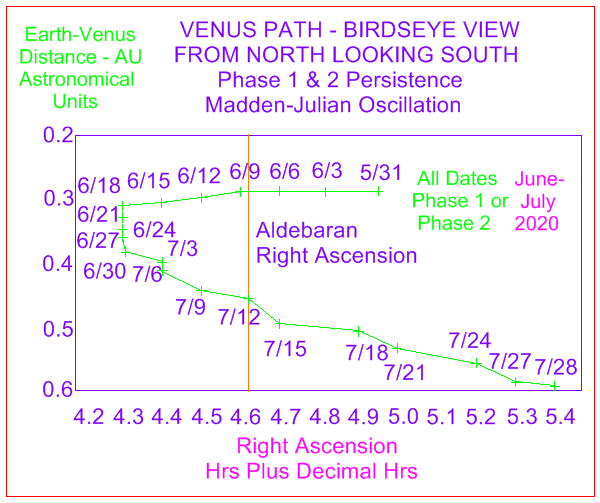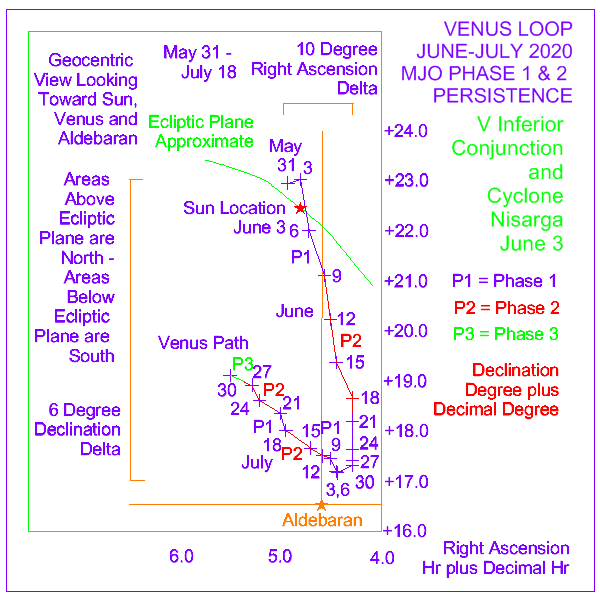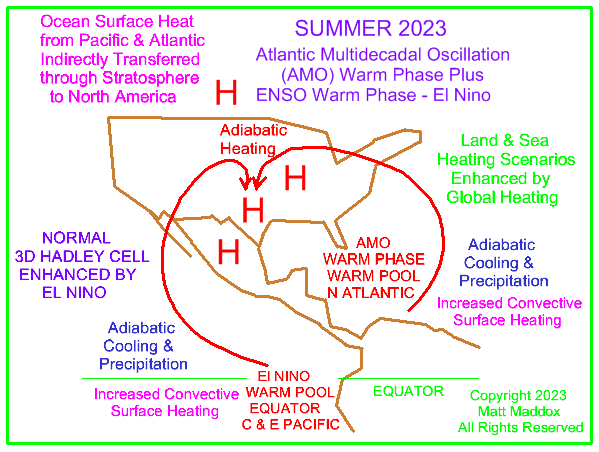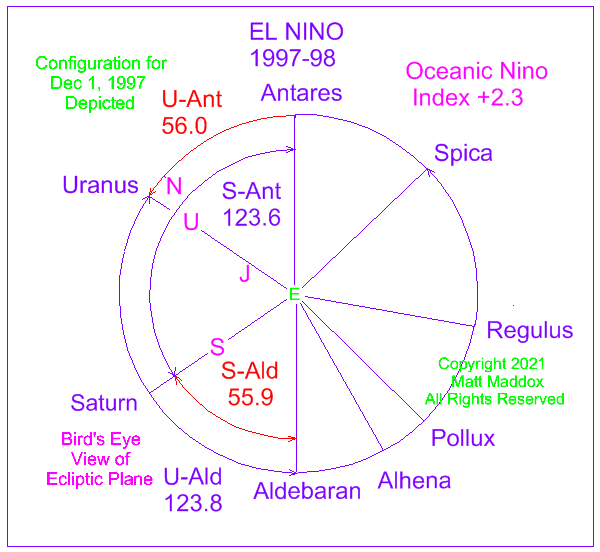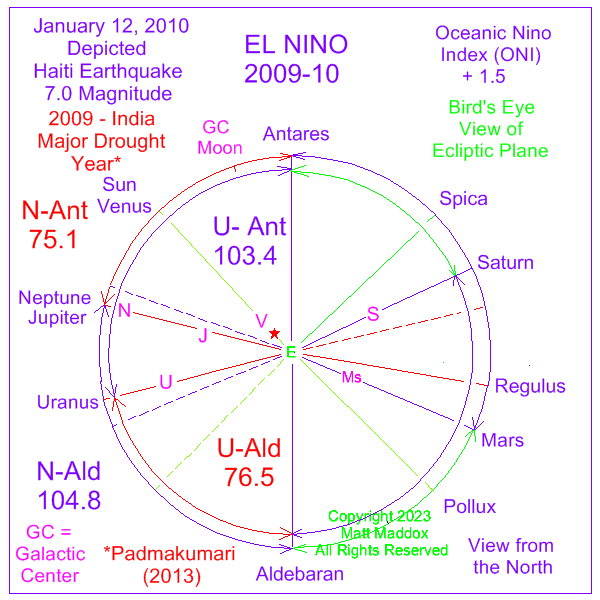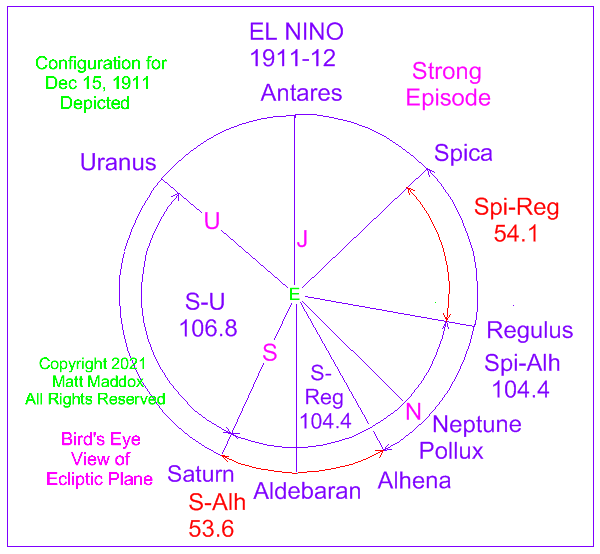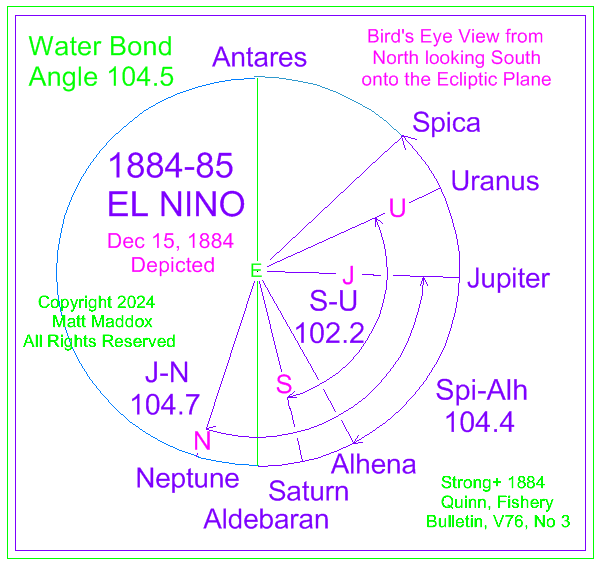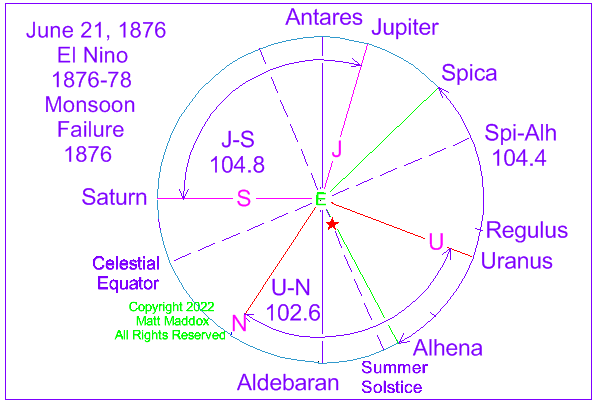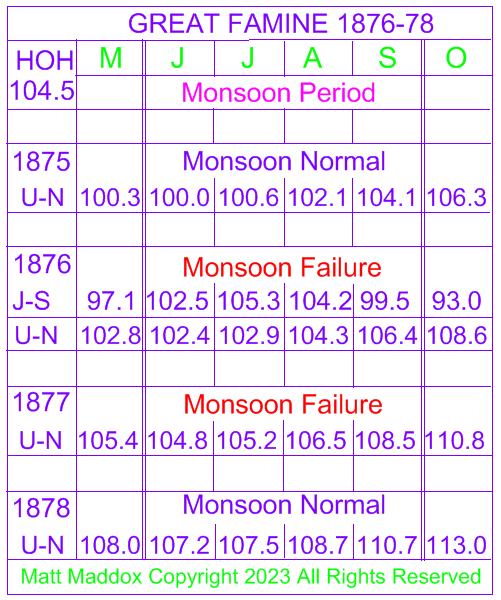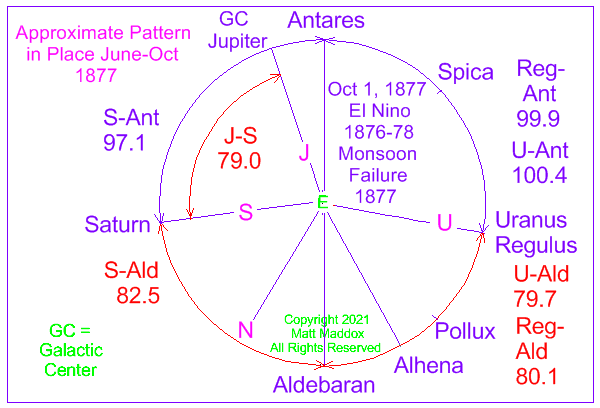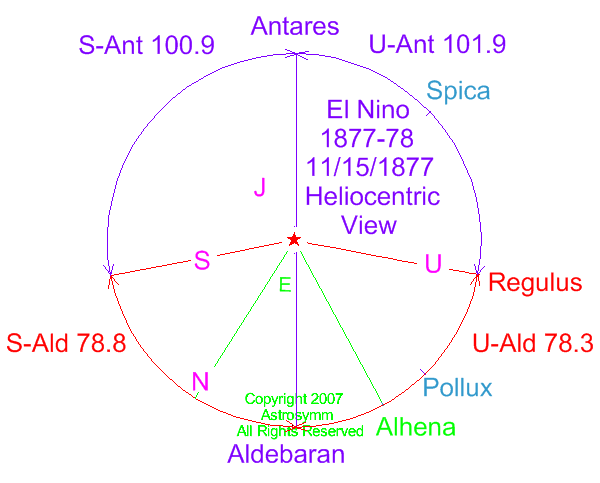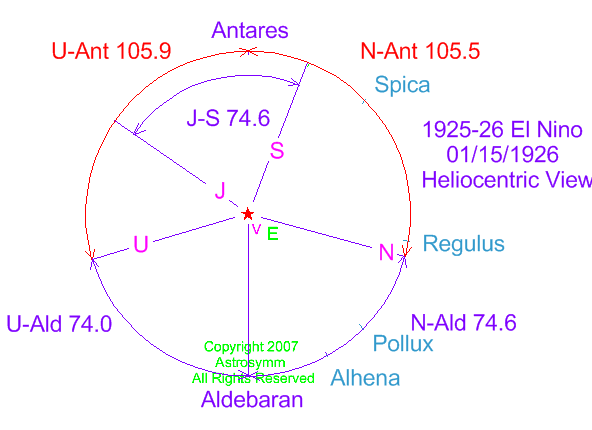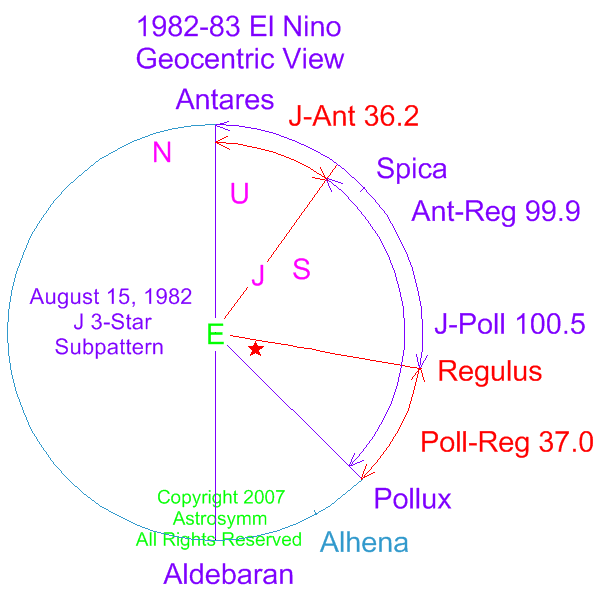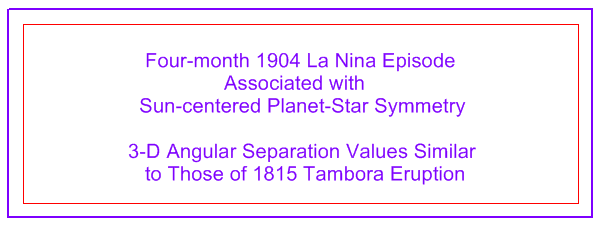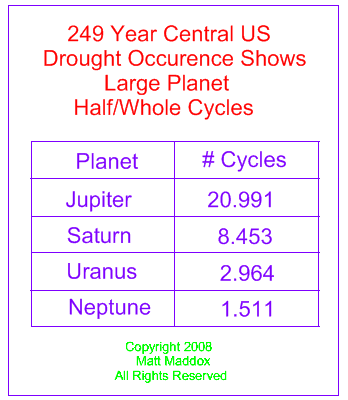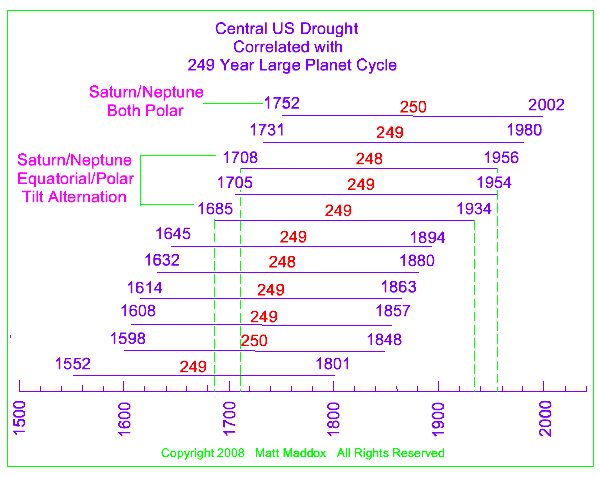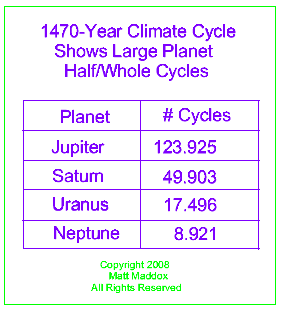| el nino/la nina/madden-julian oscillation(mjo) |
MADDEN-JULIAN OSCILLATION MJO
Uploaded 2023-06-10
Uploaded 2023-06-12 Madden-Julian Oscillation Enhanced Precipitation Persists in Indian Ocean (Phases 1 & 2) June/July 2020 While Venus Tarries near Aldebaran Note the correlation of Venus location during June/July 2020 with the persistence of MJO precipitation in the Indian Ocean. The total 8 phases of MJO usually average 48 days.The enhanced precipitation area of the MJO is in the Indian Ocean during Phase 1 & 2. Phases 1 & 2 in this case persist for two months. Venus is +/-5 degrees from Aldebaran RA (celestial longitude) from May 31 until July 18.
Uploaded 2023-06-12 June/July 2020 Venus - Same Region of Sky Phase 1,2 Persistence - MJO
2023 EL NINO WITH AMO WARM PHASE N AMERICA SUMMER PATTERN
Warm Water Central and/or Eastern Pacific The following patterns are associated with El Nino events..
Uploaded Oct 24, 2021 1997-98 EL NINO Dec 1, 1997 Depicted Note the precise symmetric angles associated this very strong episode. Saturn and Uranus were symmetrically opposed relative to the Antares-Aldebaran backbone. Further, it appears that Uranus' gravitational energy may have been reinforced with that of both Jupiter and Neptune. The J-U angle was 10.9 degrees while the N-U angle was 7.8 degrees. It is proposed that gravitational vector addition was at work in this case with the effect that Uranus' energy was enhanced with the Jupiter and Neptune symmetric pattern.
Uploaded Oct 12, 2023 2009-10 EL NINO 2009 - India Major Drought Year Note the repeat location for Uranus in the El Nino years 1925-26 & 2009-10. Meanwhile, Neptune does a flip-flop between these two episodes and shows an axis repeat and ends up on the opposite side of the solar system. Based on the stellar backbone composed of Antares & Aldebaran, Uranus has an almost perfect repeat of angular separation with Antares & Aldebaran. Neptune also shows repeat angles with the Antares - Aldebaran pair - but in reverse. Please note that India had droughts with these EN episodes - in 1925 & 2009. In 1925 per Tal (2022) there was drought in NE & NW India. In 2009 per Hazra (2013) there was a 23% deficit in All-India precipitation compared to the long-term mean.
Uploaded Nov 7, 2021 1925-26 El Nino Very Strong Episode Uranus & Neptune form a clear symmetric pattern with the Antares-Aldebaran backbone. Saturn and Uranus form a symmetric vector offset with Pollux during this very strong El Nino episode.
Uploaded 2023-12-21 1925-26 EL NINO Very Strong Episode Note the Ecliptic Star/Large Planet Symmetry associated with this notable event. The water off the NW coast of Peru was 7.7 degrees Centrigrade higher than the mean monthly temperature! This was recorded at Puerto Chicama. Author Doberitz documents this in a 1967 article.
Uploaded Oct 24, 2021 1911-12 EL NINO Dec 15, 1911 Depicted Note the Saturn-Regulus, Spica-Alhena overlapping precise symmetry associated with this strong El Nino episode. There is also adjacent symmetry to the Saturn-Regulus angle. The Saturn-Uranus angle of 106.8 degrees roughly matches the Saturn-Regulus angle of 104.4 degrees. Please recall that the bond angle of water is 104.5 degrees. So these astronomical angles could have a potent effect on the water molecule - either airborne or in the ocean.
Uploaded 2024-01-19 1884-85 EL NINO Strong+ Episode Note the Planet-Planet and Ecliptic Star Angles which closely match the Bond Angle of Water - 104.5 degrees.
Uploaded 2022-05-28 1876-78 El Nino & 1876 Indian Monsoon Failure Note the astronomical angles which approximate the bond angle of water - 104.5 degrees. First there is Spica-Alhena with a constant 104.4 degree angular separation. Second there is Uranus-Neptune with 102.6 degrees in the Northern Celestial Hemisphere. Third there is Jupiter-Saturn with 104.8 degrees which occurred just at the time of the 1876 Indian monsoon failure. The monsoon depends on a gradient between Low Pressure over land and High Pressure over the water. The resultant wind blows to land and carries the moisture which then precipitates. If the large planets are at an angle which approximates that of water - 104.5 degrees - then the water would heat up more than usual. When that happens the High Pressure Zone associated with cool water then loses some pressure and doesn't blow as much moisture toward the land.
Uploaded 2023-07-21 SW INDIAN MONSOON & LARGE PLANETS Note that, for 1875-1878, the SW Indian Monsoon seems to be affected by large planet angles at about 104.5 +/- 2 degrees at the beginning of the monsoon period. 104.5 degrees is the bond angle of water - H-O-H.
Uploaded 2023-06-20, Edited 2023-07-21
1876-78 El Nino & 1877 Indian Monsoon Failure See 1876 Indian Monsoon Failure above.
Uploaded Oct 27, 2021 1876-78 El Nino This is a geocentric or Earth-centered view of the Ecliptic plane viewed from the North. The Saturn symmetry with Regulus persists from April 1877 to March 1878. Saturn goes from Prograde to Stationary to Retrograde to Stationary to Prograde status during this time and hovers at about the same point in the sky.
1877-78 El Nino This is a sun-centered, or heliocentric view, of the solar system.
note the fairly long-term subpattern of saturn opposite
uranus-regulus. this pattern can persist for several months because saturn goes through the sky about 1 degree per month. the reverse k pattern formed by jupiter and neptune would have been short-lived, since jupiter goes through the sky about 2.5 degrees per month. however, the “bird’s foot” subpattern composed of antares, alhena, aldebaran and neptune would have persisted well into this el nino episode.
intrasite links tropical storms tornadoes solar system
climate/el nino/la nina nuclear power outage/aviation accidents earthquakes/clear air turbulence
1925-26 El Nino This is a sun-centered, or heliocentric view of the solar system.
1982-83 El Nino repeat pattern This is an earth-centered, or geocentric view of the solar system. Note the same large planet- 3-star subpattern is repeated within this extreme el nino event. In august 1982, jupiter completes the subpattern. in march 1983, after some movement has occurred, it is now saturn’s turn to complete the subpattern.
La Nina Warm Water Western Pacific
Uploaded Nov 7, 2021 1904 La Nina Jan-Apr 1904 Saturn and Neptune set up a symmetric vector offset with Spica during this La Nina episode. Simultaneously Saturn and Uranus set up the same scenario with Pollux. So both the Spica and Pollux axes - the legs of the stellar K pattern - are intensified during this episode.
four-month 1904 la nina episode early 1904
Uploaded 2024-01-18 1623-24 La Nina Very Strong Episode
249 year central us drought cycle & 249 year central us rain cycle
1470-year climate cycle (1) shows large planet half/whole cycles (1) www.ncpa.org/pub/st/st279 p5-6 the physical evidence of earth's unstoppable 1500-year climate cycle, s fred singer, dennis t avery, article from book by authors, ncpa policy report no. 279, sept 2005, isbn #1-56808-149-9, national center for policy analysis, dallas, tx, authors reference this author/article: gerard bond et al., “a pervasive millennial-scale cycle in north atlantic holocene and glacial climates,” science, vol. 278, no. 5341, november 14, 1997, pages 1257–1266.
|
copyright 2007astrosymm
all rights resrved
